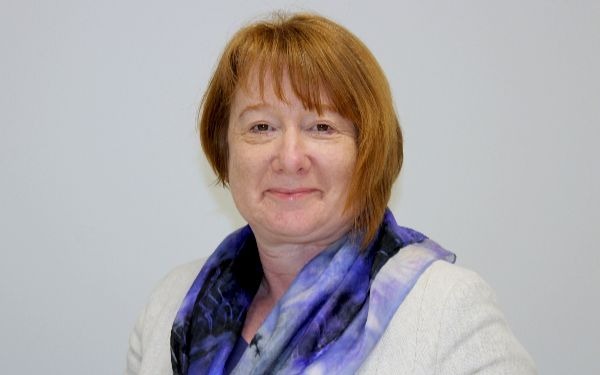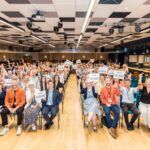
Ofsted will allowing providers to register children’s homes with up to four buildings in order to help tackle capacity pressures in the system.
The regulator said the plan would make it easier to find tailored, often single-bedded, placements in an emergency for children who would otherwise be placed in unregistered accommodation.
Providers and councils welcomed they changes, saying they would help them to provide more emergency placements, though a children’s rights charity raised concerns about the impact on children’s stability.
Currently, children’s homes must register each of the buildings where they provide care and accommodation separately, each with their own manager and statement of purpose. But from next month, Ofsted will allow them to combine four in the same registration with a single manager and statement.
The average single-building children’s home can look after three or four children, but these multi-building homes will be allowed to accommodate six children, under guidance issued last week.
In a blog post explaining the changes, Ofsted’s national director for regulation and social care, Yvette Stanley, said the care system faced significant capacity pressures, potentially increased by the recently introduced ban on unregulated placements for under-16s.
Unregistered care ‘a huge concern’
She added: “The use of unregistered provision – a symptom of these capacity issues – is still a huge concern. Of course, we can’t be sure of the quality of unregistered provision, so we don’t know whether children are safe or getting good quality care.
“Councils often resort to using unregistered placements in emergency situations, when there’s simply nowhere else for a child to go. And a shortage of secure accommodation for the most vulnerable children, at risk to themselves and others, means that the courts have little choice but to authorise the use of unregistered placements.”
She said the new approach would enable providers to have spare, small-scale capacity available in an emergency.
“This much-needed extra capacity will go some way to ease the strain on our creaking care system, and, we hope, to help reduce the number of children living in unregistered and potentially unsafe provision,” she added.
Safeguards
Addresses of buildings will be fixed, so providers will not be able to change which buildings they use without making another application.
Providers will also not be able to combine two separately registered buildings into one children’s home without making a new application.
Ofsted said registrations for multi-building children’s homes will take longer than they do for routine applications as the inspectorate will visit all buildings to approve that they are suitable and safe and whether the proposed service can be managed effectively.
The inspectorate has offered to speak to providers wishing to register four-building children’s homes before they apply. Ofsted staff making decisions on approval will be supported by a panel of colleagues from the regulator in the early days of the new scheme “to help with consistency and to make sure the right safeguards are in place”.
Ofsted will inspect multi-building children’s homes as a whole, starting next year, with weaknesses in one building affecting the overall judgment and any enforcement action applying to all buildings within the same registration.
The inspectorate also said it expected independent persons carrying out regulation 44 visits to include all registered buildings in their reports on children’s safety and wellbeing.
“We think this strikes the right balance between creating more flexibility and keeping children safe,” said Stanley.
Related articles
More scope for emergency placements
Peter Sandiford, chief executive of the Independent Children’s Homes Association, said the changes could enable more emergency placements.
“At the moment, a lot of members are saying they can’t take hard-to-place children and they can’t take emergency placements because of their statement of purpose,” he said.
“What this would give you the capacity to do when you’re matching for instance is to have a solo occupancy reception where you could take a child in, assess whether they can move into your larger three or four place home or whether they would need to be referred onto somewhere else.
“The other option it gives you also is to have one at the other end so you could have a child moving on from the longer-stay provision to a situation for independence.”
He said “quite a few” providers were interested in registering a multi-building children’s home when the applications opened on 15 November.
‘More needs to be done’
The Association of Directors of Children’s Services (ADCS) said multi-building registrations would increase the sector’s flexibility to provide emergency placements.
But it said more needed to be done “to ensure regulation supports local authorities and providers to meet the needs of children today”.
“ADCS has long called for a regulatory review which ensures care is regulated by the outcomes it delivers not the building it is based in,” said president Charlotte Ramsden.
“Improving access to mental health provision for vulnerable children and young people, investment in the workforce, and addressing excessive profit making by private equity firms are also areas that must be addressed.”
Concerns about changes
Carolyne Willow, director of children’s rights charity Article 39, said she was concerned that the changes risk “returning to the campus-style institutions of the past where children were sent between buildings for assessment and punishment”.
“What we must guard against today is children being passed from building to building and not being able to settle in a place they can call home,” she said.
“Having one registered manager for four separate buildings obviously raises significant implications for team dynamics and staff support, and I’m also very worried about the increase in children living in buildings alone.”
Willow said the latest changes continued a recent “unwinding of safeguards” that includes Ofsted now basing how often it inspects children’s homes according to their current year’s results rather than the previous year’s.
Jonathan Stanley of the National Centre for Excellence in Residential Child Care, said Ofsted’s guidance could bring about “a return for institutional thinking”.
He said current situations where a registered manager works across two children’s homes require an “exceptional manager, with exceptional leadership in each home, and exceptional staff teams”.
“Before any consideration of the place there are intensive considerations to be given before this guidance is used extensively,” he said.
“There are other forms of flexibility that would meet the regulations, legal opinion can be sought on these too.”




 Bournemouth, Christchurch and Poole
Bournemouth, Christchurch and Poole  Hampshire County Council
Hampshire County Council  Oxfordshire County Council
Oxfordshire County Council  South Gloucestershire Council
South Gloucestershire Council  Wokingham Borough Council
Wokingham Borough Council  Webinar: building a practice framework with the influence of practitioner voice
Webinar: building a practice framework with the influence of practitioner voice  ‘They don’t have to retell their story’: building long-lasting relationships with children and young people
‘They don’t have to retell their story’: building long-lasting relationships with children and young people  Podcast: returning to social work after becoming a first-time parent
Podcast: returning to social work after becoming a first-time parent  How managers are inspiring social workers to progress in their careers
How managers are inspiring social workers to progress in their careers  Workforce Insights – showcasing a selection of the sector’s top recruiters
Workforce Insights – showcasing a selection of the sector’s top recruiters 

 Facebook
Facebook X
X LinkedIn
LinkedIn Instagram
Instagram
For two decades regulation has required every children’s home to have a registered manager. Since responsibility for regulation was transferred to Ofsted in 2007 the policy of one manager responsible for one home has been upheld. The registration of one manager over two homes being approved only in exceptional circumstances, and subject to the regulator being satisfied by the competence of the manager. The changes that have been approved represent a significant shift in policy. I am not aware of any research/evidence that explains why it is now safe to place vulnerable children with complex needs in one of four homes managed by one registered manager responsible for as many as 24 children living in close proximity. It remains to be seen whether the availability of emergency placements and lone placements will be increased as suggested, and I am fearfully reminded of all the scandalous reasons why we moved away from similar arrangements in the past. It is worthy of note that qualification is not an essential requirement for registration.
Absolutely agree!
The changes have nothing to do with safe or good practice and everything to do with politics, and is yet another example of Ofsted no longer being fit for purpose, if indeed it ever was.
Degradation of services across the board, game playing ……. The Emperor has no clothes!